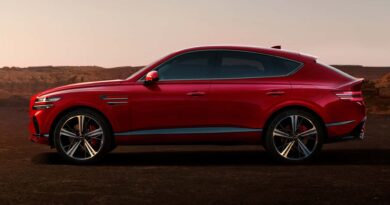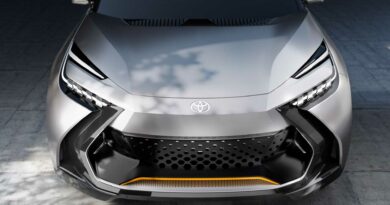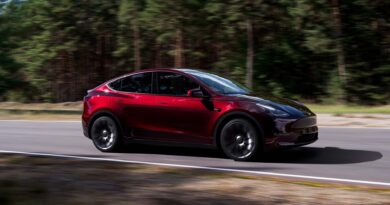Aston Martin Working On 800V Front-Wheel Drive EV Setup
Aston Martin, the British ultra-luxury carmaker that gave the world several James Bond cars, is preparing for an all-electric future, having pledged to transform its core range of vehicles into battery electric (BEVs) ones by 2030.
A big part of the transformation will lie in the marque’s collaboration with another luxury brand – American-based Lucid, maker of the Air sedan EV – which will provide Aston Martin with EV powertrain components including a rear drive unit with twin motors, battery modules, and software for tying everything together.
But that’s not all Aston has in store, as it’s also working on offering an electrified powertrain (in other words, hybrid) option on all of its cars by 2026, the first of which being the Valhalla PHEV (pictured below, which will be delivered next year). And here’s where the interesting part begins, because a rather inconspicuous press release revealed that the British car manufacturer is working on an EV setup that incorporates an 800-volt traction battery and front-wheel drive electric motivation.
Through the Advanced Propulsion Centre (APC), Aston Martin received funding of £9 million, or roughly $11 million, from the UK government to further develop its bespoke modular battery electric vehicle (BEV) platform. Aston has previously committed to invest £2 billion ($2.5 billion) to transition from internal combustion engines to all-electric vehicles.
With the latest funding, the British carmaker will lead a six-partner collaborative project that “will address the technical challenges of developing a lightweight, 800V traction battery and twin front electric drive unit (EDU) into a modular BEV platform with bandwidth from supercar to SUV,” the release says.
Gallery: Aston Martin Valhalla
For a luxury car maker, front-wheel drive is rarely an option – although even Aston Martin broke this unwritten rule when it sold a rebadged Toyota iQ city car with FWD in the 2010s – so investing millions into a high-performance FWD EV makes no sense. Unless the setup is used for an all-wheel drive EV, where the Lucid-supplied rear drive unit works together with the front one and can disconnect in some driving scenarios, or as part of a hybrid powertrain, with the rear wheels set in motion by the front-mounted ICE engine.
The press release doesn’t mention this, but the first variant seems to be the most plausible here, seeing how Aston Martin also has an agreement with Mercedes-Benz, which makes high-powered hybrids. Using a readily available hybrid solution instead of pouring tons of cash into a new approach, especially since Aston will mostly phase out gas-burning cars by the end of the decade, makes the most sense.
But what do you think? Let us know in the comments section below.
Source: Aston Martin
Source: Read Full Article




